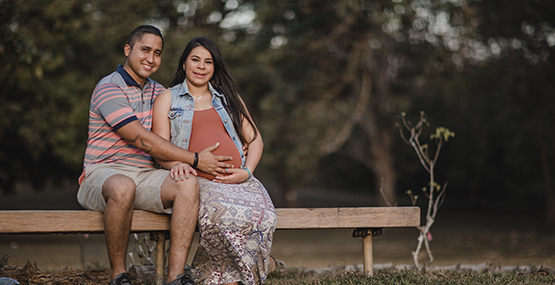
The Latest and greatest treatments for IBD: What to believe
What’s the best IBD medicine for me? Confusion on television and in your inbox....
See moresign up for our newsletter
SubscribeIf IBD flares during pregnancy, or a new case develops, your gastroenterologist will want to know where the disease is located and how severe it is in order to choose the right management strategy. Most of the time, that will require blood and stool tests. A colonoscopy or imaging studies may also be needed. But is that going to put the baby at risk?
Colonoscopy During Pregnancy
A colonoscopy provides an essential view of the surface of the entire large intestine (the colon), and sometimes a look into the last portion of the small intestine (called the terminal ileum) to determine the activity of Crohn's disease and ulcerative colitis. This is usually performed with the women on their sides (so the baby isn't pressing on the arteries or intestine). They are given sedation, using medicines that appear to be safe for unborn babies. In ulcerative colitis, a flexible sigmoidoscopy can be substituted sometimes since it can show the lower part of the lower intestine and can be done with or without sedation.
While there can be a risk to the baby, particularly of a miscarriage, a recent study (A deLima and others, J Crohn's Colitis, 2015, pages 519-524) was done where 42 pregnant women with IBD had a colonoscopy or sigmoidoscopy and they were compared to an equal number of pregnant women with IBD who did not have a procedure. Among the 42 who had a procedure, 2 (5%) had miscarriages—but 10 (24%) of those who didn't have a procedure also had miscarriages. There were no other differences except that those who had the procedures did have babies that were a pound lighter at birth.
X-rays During Pregnancy
Guidelines for all pregnant women suggest that x-rays should be avoided if at all possible, because of radiation exposure to the baby. As a result, sonograms (ultrasounds) are used when possible. They can tell a great deal about the baby and the uterus, but they don't usually provide much information about the intestine and inflammation there (and the baby can get in the way of seeing the intestine).
MRIs (magnetic resonance imaging) can usually provide that information. However, the contrast that someone would normally drink to outline the intestine isn't used for the pregnant woman because its safety hasn't been established. There's also limited experience with MRIs, though there's been no evidence of any harm to unborn infants from the procedure.

Surgery During Pregnancy
If a pregnant mom needs surgery, an international group of doctors (GC Nguyen and others, Gastroenterology, 2016, pages 734-57) recommends that the surgery be done because there has been no evidence of babies having problems as a result—and a delay might increase the risk to both baby and mother. So a careful decision should be made, weighing the risk of the surgery against the risk of ongoing, active disease. Any surgery should be performed where there are high-risk OB and pediatric services for the baby as well.
Conclusions
The goal during pregnancy is to keep moms healthy during their pregnancies, since this results in better outcomes for their babies. So
This article, as well as all others, was reviewed and edited by a member of our Medical Advisory Board.
Subscribe Be the first to know